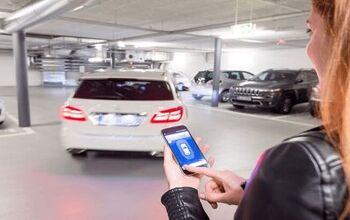Bosch Tech Brings Driverless Cars Closer to Reality

German automotive supplier Bosch is making big strides in bringing autonomous cars closer to reality.
A lot of concept cars these days are debuting with no steering wheel or pedals, which sounds crazy, but it’s actually not that far-fetched. Most of them have pedals or steering wheels that are hidden away until they’re needed. Bosch is developing such “redundant” steering and braking systems — “redundant” meaning that they’re included for safety reasons but under normal circumstances, you should never need them.
Redundant steering and braking systems are a key factor in making sure autonomous driving cars pass the safety regulations needed to make driverless cars viable for mass consumption. Redundant steering ensures that all safety-critical functions continue during the rare event of a system failure. That means should a failure of any kind occur with one of the steering components, the steering will still be functional enough to drive safely without any human intervention. The redundant braking system follows the same concept and ensures full braking capacity if a failure of one or more components within the entire system should occur.
ALSO SEE: Mercedes Teams with Bosch to Develop Self-Driving Taxis
Bosch has developed two distinct redundancy systems — one for steering and one for braking that should help increase consumer confidence in autonomous car technology.
Bosch’s goal is to support all levels of automation defined by the SAE and the technology is continually being refined, as Level 3 SAE vehicles will begin to hit the market at the tail end of 2018.
The redundancy braking solution combines an electromechanical brake booster called iBooster and an electronic stability control system. Both components are independently capable of performing braking functions for the vehicle in the case of a failure in either of the systems.
The redundant steering system takes a similar approach and uses an electric power steering system with a fail-operational function. The system can enable either a driver or autopilot system to make a safe stop in the rare case of a single failure. Mitigating instances of such failures is a key step in making fully autonomous driving fully realizable.
This is a team effort and Bosch has several engineers hammering away at every aspect of this technology to improve it and make it easier for OEMs to configure the two individual systems to their own liking.

Chidi loves talking about cars. He enjoys exploring the limits of new car technology and performance vehicles. When he is not writing features for AutoGuide, you will most likely find him perusing Kijiji or Autotrader listings for unique classic nameplates.
More by Chidi Ohiaeri

































Comments
Join the conversation